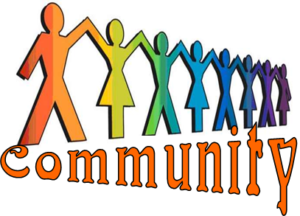By Robin Wilkins – Pūriri teacher
I love Montessori; as a way of living, the endless opportunities that a Montessori environment offers each of us, the way that the community accepts every one as a new member. I love that the oldest students in the environment not only teach the younger ones but mentor, nurture and protect them. “There is a great sense of community within the classroom where children of different ages work together in an atmosphere of cooperation rather than competitiveness. There is respect for the environment and for the individuals within it”. (Dr. Montessori)
Being involved in a community of friends is vital in the growth and development of our ākonga. It is therefore important that we spend time developing practices that build community consciousness, provide support, a sense of belonging and a strong sense of self and connection. These relationships are critical for emotional stability and ability to focus on learning. Whatever time is spent on building community lays a necessary foundation for calm and peaceful academic work.
We typically begin each school year with activities that help form a bond of mutual respect and collaboration with all members of the class. We are wanting to develop a unified feeling of being a community, to develop and build a spirit of cooperation and recognition of each other’s strengths and weaknesses, differences and uniqueness.
This is the time when we develop our new class treaty which ties in with learning about the ‘Treaty of Waitangi’- understanding that a treaty is an agreement which helps people find a peaceful way to settle an argument or dispute. It must take into account the rights of others. It is always student-generated which promotes self-discipline. It may include statements such as “Everyone should feel included”. These treaties represent an acknowledgement by everyone that there are limits to individual freedom and actions must be based on the needs of living in a community. To signify their acceptance all tamariki, and teachers sign the final document.
Community meetings are also a time for ākonga to share concerns, brainstorm ways to solve a problem and offer solutions in the hope that a consensus will emerge. This is invaluable as ākonga feel invested in the solution rather than a decree by the teacher.
Education for Peace is at the heart of Montessori philosophy. Montessori believed that it produced a new kind of person, conscious of his/her unity with all others, past and present, everywhere on the globe. One of the principle tools for building a sense of peace is the origin story exploring where we come from as a species. As ākonga learn their origins, they become more conscious and aware of the essential unity of humanity.
Grace and Courtesy lessons are also essential for developing social skills (how to interact appropriately in a community).
This heightened sense of human community helps contribute to the self-discipline we seek in our ākonga.
This is a long learning journey.
